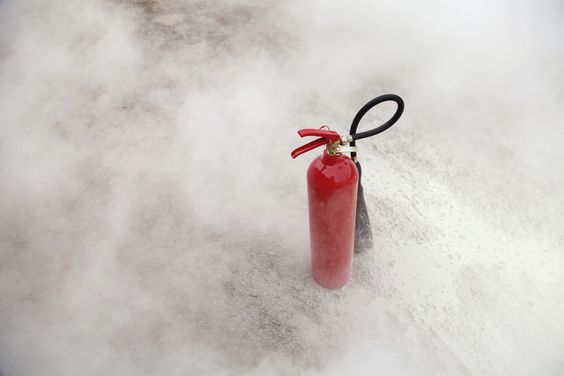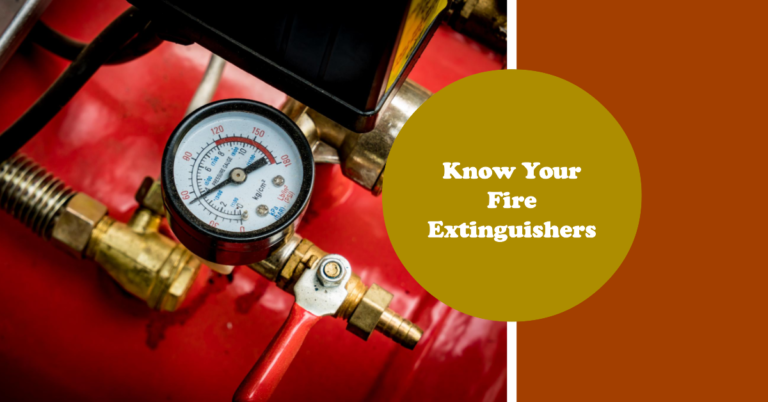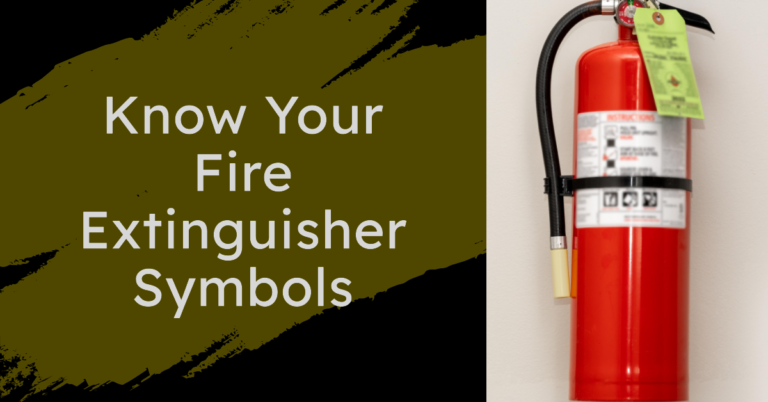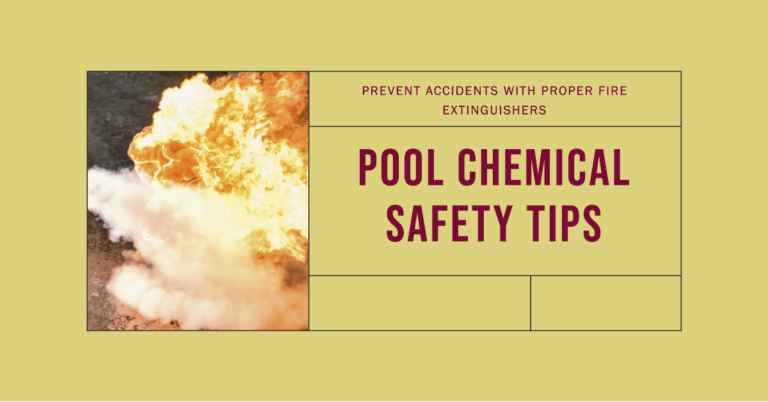Last Updated on April 17, 2023 by Allen
As a fire safety technician, I know the importance of having the proper equipment in place to quickly and safely extinguish fires. Fire extinguisher balls are an effective way to do this without relying on expensive traditional fire extinguishers or bulky water hoses. In this article, I’ll explain how to make your own fire extinguisher ball with common materials and easy-to-follow steps.
Nowadays, it’s becoming more and there’s more need for efficient, portable fire suppression systems that don’t require a large amount of maintenance or specialized training. Fire extinguisher balls provide just that – they’re small enough to fit almost anywhere, yet powerful enough to tackle most household fires. And best of all? You can easily make them yourself!
Whether you’re a homeowner looking for added peace of mind or a business owner needing extra protection against potential disasters, learning how to create your own fire extinguisher ball is invaluable knowledge. So let’s get started!
Types Of Fire Extinguisher Balls
Fire extinguisher balls – what a conundrum! Who would’ve thought such an innocuous-looking item could be so important? As safety technicians, we know all too well that fire extinguisher types can make or break the outcome of any blaze. From dry chemical to carbon dioxide, from foam to halon – there’s no shortage of options when it comes to fire suppression. But which one is best for you? Let’s take a look at some common fire extinguishers and their pros and cons.
Dry chemical agents are effective in suppressing Class A, B, and C fires by forming a protective blanket over combustible materials. However, they’re not suitable for fighting electrical fires due to the conductive nature of the agent itself. Foam-based agents have similar limitations but provide better protection against flammable liquid fires than powder-based ones do. Carbon dioxide is a great choice for use on computer equipment since it doesn’t leave behind residue after the application; however, it requires special training to operate correctly. Halon systems offer superior performance against electrical fires but need specialized maintenance because they eventually deplete over time.
So which type of fire extinguisher should you choose? Well, that depends on your specific needs and situation. In certain cases, combining two different types may even be more effective than relying on just one alone! Now let’s move onto discussing components of a fire extinguisher ball…
Components Of A Fire Extinguisher Ball
Now that we have explored the types of fire extinguisher balls available, let’s take a look at their components. Fire extinguisher balls contain several different parts and must be used correctly in order to function properly. The three main fire-extinguisher-ball-parts are the ball itself, an outer shell made from polyethylene, and a chemical powder inside the ball.
The fire-extinguisher-ball-components make up the device that is designed to suppress fires quickly and efficiently. The inner core contains a dry chemical agent such as monoammonium phosphate or sodium bicarbonate which acts as a flame retardant when it comes into contact with flames. It also has an ignition element on its surface that triggers when exposed to heat. This causes the chemicals inside to expand rapidly and release smoke to suffocate the fire.
Additionally, there’s a pin attached to the ball which needs to be pulled out before use. When this occurs, it opens up two small vents on either side of the ball allowing the chemical powder to escape and come into contact with any potential flames. With these components working together, a single fire extinguisher ball can put out small fires quickly and safely without having to wait for help from firefighters or other emergency personnel.
By understanding what makes up a fire extinguisher ball, users can ensure they are using them correctly so they will work effectively in case of emergencies. Next we’ll explore how best to assemble all the pieces of a fire extinguisher ball for maximum efficiency and safety during use.
Steps To Assemble The Fire Extinguisher Ball
It’s easy to make your own fire extinguisher ball. All you need is the right materials, a little bit of know-how and some dedication. You can create an effective fireball that could save lives in emergencies! Here are the items you’ll need for DIY assembly:
- Fire retardant material
- Potassium bicarbonate
- PVC pipe with end caps
As a certified fire safety technician, I’m here to provide step-by-step instructions on how to assemble your own fire extinguisher ball. First, start by cutting out pieces of fireproof material following the size requirements of your chosen manufacturer; this will form the base and walls of your fireball. Next, fill up the interior with potassium bicarbonate powder which serves as the combustible agent when exposed to heat or flame. When done filling it up, seal off both ends with two PVC pipes equipped with endcaps so nothing falls out. Finally, secure all connections firmly and check if everything is properly sealed before taking action in an emergency situation.
Now that you have a better understanding of what goes into assembling a fire extinguisher ball, let’s move on to creating one from scratch…
Step-By-Step Instructions For Making A Fireball
Now that you know the steps to assemble a fire extinguisher ball, let’s look at how to make one. Making your own diy fire extinguisher is easy and can be done with everyday household items. For this project, you’ll need some basic materials including cloth, foam rubber, water resistant adhesive tape and baking soda.
Begin by cutting out two pieces of fabric in the shape of a circle that are twice as large as the diameter of the fireball you want to create. Next, cut two circles from foam rubber that match the size of your first two circles’ diameters. Then use waterproof adhesive tape to attach both sides of the fabric together with their respective foam rubber circles sandwiched between them. Now it’s time to fill up your fireball with baking soda to increase its effectiveness against fires. Make sure not to overfill so it doesn’t become too heavy for one person to handle safely. Finally, close off any openings around the edges using more waterproof adhesive tape for an airtight seal before testing out your new homemade fireball!
With these simple instructions, anyone can easily make their own fire extinguisher ball in no time. With just a few inexpensive materials, and some creativity, you’ll have all you need for a DIY fire extinguisher ball ready-to-go in no time at all!
Materials Needed To Make A Fireball
If you’re looking for a surefire way to protect your property from the potential hazards of fire, then investing in a Fire Extinguisher Ball is an excellent option. To ensure that it functions as intended and can adequately extinguish flames, there are certain materials necessary for its construction. Let’s take a look at what these components consist of so we can get started on creating this lifesaving tool.
To begin with, one needs to source the right kind of shell material for the Fire Extinguisher Ball. This should be something tough and resilient; polycarbonate or ABS plastic are both suitable options here. Secondly, one must pick out their chosen chemical agent – water-based powder mixtures such as mono ammonium phosphate work particularly well when combating fires caused by combustible materials like wood and paper. Thirdly, other essential parts include a pressure release valve which regulates the force used to eject the chemicals upon activation and a safety switch which prevents accidental discharge during setup or storage.
It’s also important not to forget additional items such as dry sand which will absorb any remaining moisture in order to prevent corrosion over time, along with an outer coating designed for protection against rough handling or extreme temperatures. Armed with all these elements, we can now move on to discuss the chemical composition and mixing process needed to create our very own Fire Extinguisher Ball!
Chemical Composition And Mixing Process
Right, now that we have the materials together for our fire extinguisher ball, it’s time to start mixing. The chemical composition of the fireball is what will give it its fire-fighting capabilities, so getting this step right is key.
The main components of the mixture are potassium bicarbonate and aluminum powder or flakes. Both ingredients must be mixed in equal parts (1:1 ratio) to achieve optimal effectiveness when fighting a blaze. When combining these two elements, you should use eye protection and gloves as a safety precaution. Also, make sure any containers being used can handle exposure to high temperatures since they may reach up to 400 degrees Fahrenheit during combustion.
Once all safety measures are taken into account, mix both ingredients until they form an even consistency without any clumps remaining – typically achieved with a blender on low speed settings. After blending, transfer the mixture onto parchment paper or wax paper where it can sit undisturbed for several hours before curing and finishing the fireball.
Curing And Finishing The Fireball
Did you know that over 60% of all fire-related fatalities happen in households? It is crucial to have a reliable and easy-to-use fire extinguisher nearby at all times. In this tutorial, we’ll show you how to make your own homemade fireball fire extinguisher.
The curing and finishing process for the fireball involves several steps to ensure it is ready for use:
| Step | Description | Materials Needed |
|---|---|---|
| 1 | Paint & dry the ball | Acrylic paint, brush or roller |
| 2 | Attach nozzle | PVC pipe, Teflon tape |
| 3 | Fill with powder | Fire retardant powder |
First, take an acrylic paint of your choice and apply a thick layer on the surface of your fire extinguisher ball using a brush or roller. Allow it to dry completely before proceeding further. Once dried, attach a PVC pipe as the nozzle by wrapping it tightly with Teflon tape. Finally, fill up the ball with fire retardant powder until it reaches its maximum capacity. This will ensure that the ball can successfully put out fires when needed. After completing these steps, your homemade fireball fire extinguisher should be ready for use!
Storing And Recharging The Fireball
Now that the fire extinguisher ball has been cured and finished, it is time to store and recharge it for use in a future emergency. Proper storage and recharging of the fireball are essential steps in ensuring its effectiveness when needed:
- Store the fire extinguisher away from heat sources like radiators or direct sunlight. Ideally, this should be done in a dry place with temperatures below 85 degrees Fahrenheit (29 Celsius).
- Recharge the fire extinguisher after each use according to the manufacturer’s instructions. Typically, this involves refilling the powder inside and wiping down any residue on the outside of the ball. It is also important to check whether there have been any damages before storing again.
- Be sure to inspect your fire extinguisher regularly. Look for signs of wear or damage such as cracks, dents, loose parts, leaking valves/seals, etc., so you can repair them if necessary. You should also keep track of how long it takes for your fireball to recharge completely – if it takes longer than usual then there may be something wrong with it that needs fixing!
- Make sure everyone who will be using the fire extinguisher knows how to operate it properly. This includes understanding what type of fire it can put out, how far away from a flame one must stand while using it, and other safety precautions related to using an incendiary device.
Taking these simple steps will ensure that your fireball remains ready for emergencies at all times. Taking proper care of your fire extinguisher ball not only increases its life expectancy but also reduces risk associated with improper handling or maintenance during an emergency situation. With regular maintenance and inspection plus proper storage techniques, you can rest assured knowing your fireball is always ready when you need it most!
Proper Use And Maintenance Of The Fire Extinguisher Ball
Using a fire extinguisher ball is a simple and effective way to help protect your property from the dangers of fires. It’s important that you understand how to properly use and maintain it in order for it to be as effective as possible. Here are some tips on using and maintaining your fire extinguisher ball correctly:
First, always read the instructions provided with your fire extinguisher ball carefully before use. This will ensure that you know exactly when and where to deploy the device. In addition, make sure that everyone living or working in your space knows where the fire extinguisher ball is located, so they can quickly act if needed.
Next, inspect your fire extinguisher ball regularly and replace the liquid solution inside according to its manufacturer’s guidelines. You should also check any seals or other components of the device for signs of damage or wear-and-tear every few months; this helps keep it in good condition over time. Finally, never leave a used fire extinguisherball unattended; dispose of it safely by following local regulations regarding waste disposal.
By adhering to these usage and maintenance guidelines, you’ll help ensure that your fire extinguishing ball performs optimally whenever you need it most.
Troubleshooting Common Problems With The Diy Fire Extinguish Ball
Now, let us focus on troubleshooting common problems with the DIY fire extinguisher ball. As a fire safety technician, it is important to be aware of preventative measures that can help you avoid any issues before they arise in the first place. To ensure your fire extinguisher ball works as intended and provides maximum protection against fires, here are some helpful tips to keep in mind:
First and foremost, inspect all components for signs of wear or damage prior to use. Make sure all parts are securely connected and there are no gaps between them. The ball should also have enough pressure inside so when thrown into an open flame, it will explode properly and disperse its contents effectively. Additionally, check for cracks in the outer shell to make sure that nothing leaks out during usage. Lastly, practice using the device regularly and get familiar with how quickly it disperses foam when activated by heat.
If you find yourself dealing with a malfunctioning fire extinguisher ball while fighting a blaze, don’t panic! Keeping your cool is essential; if done correctly, you may be able to salvage the situation and save lives from harm’s way. Start by checking whether or not the trigger has been pulled sometimes this simple step can solve most issues right away. If not then take note of what went wrong – this information could prove invaluable for future maintenance purposes and even help inform others about potential issues they might face down the road. Finally, always remember that prevention is key when it comes to ensuring proper function – pay attention to warning signs like noises or unusual smells coming from your DIY fire extinguish ball so you can address them promptly and avert disaster altogether!
Conclusion
In conclusion, creating your own fire extinguisher ball can be a cost-effective way to protect yourself and your property from fires. With the right materials and process, you can make a reliable DIY fireball that is just as effective at putting out fires as store-bought models.
That said, some people may object to making their own fireball because of safety concerns. I would urge them to take all necessary precautions when building their device, including wearing protective gear such as gloves and eye protection while handling hazardous chemicals like sodium bicarbonate or potassium nitrate. Additionally, if it’s not done correctly, an incorrectly made fire extinguisher ball could burst in flames instead of suppressing them!
Finally, remember that this project should only be attempted by those with experience working with flammable material or who have researched proper techniques for doing so. It’s also important to follow any instructions provided on the packaging of components used in constructing the fireball and use common sense when storing and recharging the device afterwards. Following these tips will ensure that you stay safe while taking advantage of the benefits of having your own homemade fire extinguisher ball.







